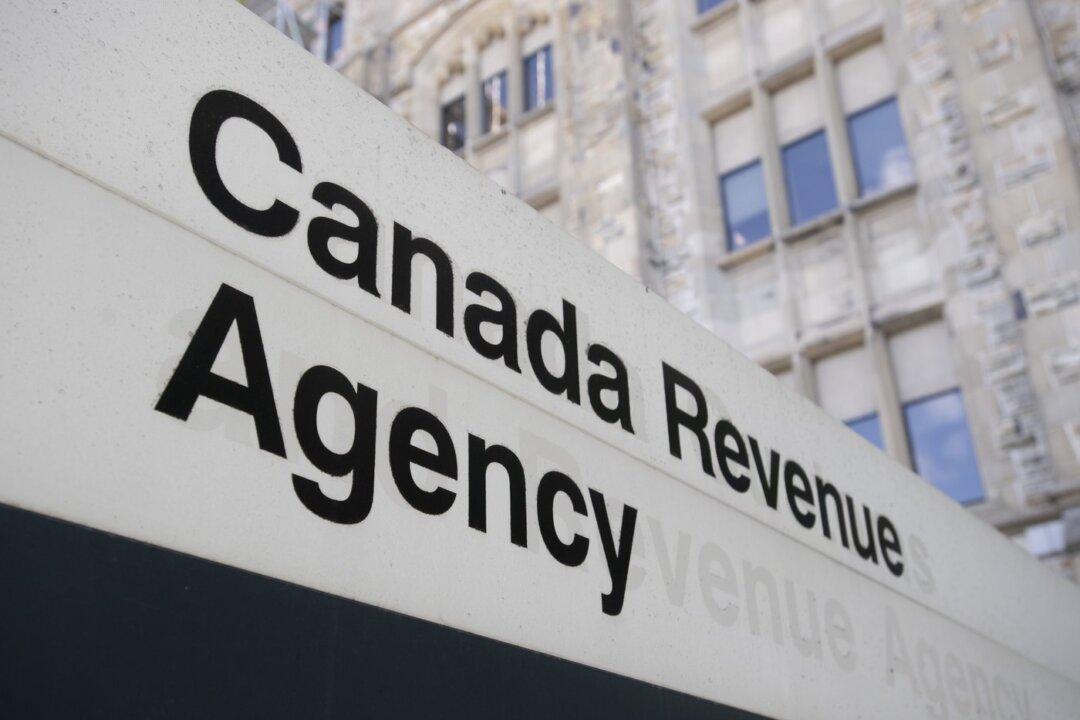Callers to the Canada Revenue Agency (CRA) in 2023 spent 20-plus minutes on hold, despite the agency spending more than $480 million on call centres, a new report shows.
The CRA doled out $481.1 million for call centres in the 2022–23 fiscal year, setting a new spending record, according to an Inquiry of Ministry obtained by Blacklock’s Reporter. The response by National Revenue Minister Marie-Claude Bibeau’s office showed that 7,319 full-time employees were assigned to deal with calls to the CRA.
“The goal is to respond to callers within 15 minutes or less of opting to speak with an agent,” the agency wrote in its Inquiry of Ministry tabled in the Commons. “The agency aims to meet this standard 65 percent of the time.”
Despite the CRA’s goal, the average wait time to speak with an agent in 2023 was more than 22 minutes, according to correspondence provided to the Global News. That compares to an average wait time of one minute and seven seconds in 2015–16.
While the documentation provided indicated a 22-minute wait time, the CRA told Global News that, as of September, the average wait time was down to 19 minutes. The agency said its major call centres are averaging a five-minute wait.
The CRA’s performance spurred Auditor General Karen Hogan’s office to announce last month that it would again look into wait times and responses at CRA call centres. The move comes seven years after a predecessor in 2017 faulted the agency’s wait times.
Conservative MP Adam Chambers wrote to Ms. Hogan’s office in November requesting a follow-up report after receiving “countless” complaints from constituents about long wait times, blocked calls, and confusing advice, as first reported by The Globe and Mail.
Mr. Chambers, in his letter to Hogan, said the CRA call centres budget has risen $330 million between 2015–16 and 2022–23 with an additional 4,600 employees hired.
Budget vs. Calls
While budget and employee levels have risen, call levels have not. The documentation provided by the National Revenue Minister’s office showed 15 million calls came into the CRA’s main call centre for individual and business tax inquiries in 2015–16, compared to 14 million in 2022–23.The correspondence also showed that significantly less was spent on call centres in 2015–16: $149 million and the equivalent of 2,651 full-time employees.
While the 2024 budget is down from the previous fiscal year, it is still significantly higher than 2016 levels. The CRA says it will spend $418 million this year based on the agency’s new collective bargaining agreement and redistribution of funds for call centres.
The budgets for CRA call centers tripled in response to a 2017 Auditor General’s report that reproached agency managers for inadequate service. The report said taxpayers had only a one in three chance of speaking to a live agent.
In 2018, the government had approved millions in call-centre upgrades in a bid to obtain prompt service for callers.
“We’re getting to a point where about half the calls are getting through,” Revenue Commissioner Bob Hamilton told the Senate national finance committee at a 2018 hearing in 2018. “I’m not trying to say it’s perfect.”
“We are focused on improving things today for Canadians who try to reach us by phone and hopefully in the near future the technology will help us improve even more,” he added. “I’m confident that through our action plan, we can and will do better.”







